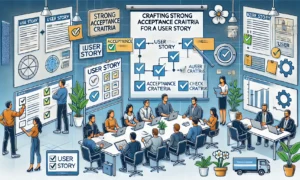Flipkart’s Big Billion Day (BBD) campaign is a masterstroke in Indian e-commerce history, transforming seasonal shopping trends into an annual retail phenomenon. This case study explores how Flipkart’s product management and cross-functional strategies turned Big Billion Day into a success, focusing on key aspects such as scalability, customer experience, technology optimization, and data-driven decision-making.
The Challenge: Building Trust in E-Commerce
When Flipkart launched its first Big Billion Day sale in 2014, Indian consumers were still warming up to online shopping. The challenges included:
- Driving Massive Traffic: Ensuring the website and app could handle millions of users simultaneously.
- Creating FOMO (Fear of Missing Out): Making the event irresistible with deep discounts and exclusive deals.
- Building Trust: Delivering a seamless shopping experience to establish credibility in the e-commerce space.
The Product Management Approach
To execute Big Billion Day successfully, Flipkart’s product management team aligned with business, technology, and logistics teams to achieve these goals:
- Scalable Infrastructure: Ensuring platform stability during traffic surges.
- Seamless User Experience: Creating intuitive features for browsing, payment, and order tracking.
- Targeted Personalization: Leveraging customer data for relevant recommendations.
- Optimized Logistics: Ensuring timely delivery and stock availability.
Key Strategies and Features
1. Scalability and Infrastructure
- Cloud-Driven Load Management: Flipkart adopted cloud technologies to manage massive traffic spikes during the sale.
- Stress Testing: Product teams ran simulations to identify potential bottlenecks, ensuring minimal downtime.
- App Optimization: Prioritized mobile app stability, given that 70% of purchases in India occur via mobile devices.
2. Personalized User Experience
- AI-Driven Recommendations: Flipkart used machine learning algorithms to display personalized product recommendations based on browsing and purchase history.
- Early Access for Premium Members: Introduced Flipkart Plus, offering members exclusive early access to deals.
- Real-Time Price Alerts: Enabled users to track discounts on their wish-listed items.
3. Marketing and FOMO Creation
- Teasers and Pre-Sale Buzz: Launched teaser campaigns weeks before BBD, creating anticipation for blockbuster deals.
- Flash Sales: Introduced hourly flash sales to drive urgency and repeat visits.
- Gamified Shopping: Engaged users with interactive games offering additional discounts.
4. Payment Innovations
- Affordability Options: Partnered with banks to provide instant cashback, no-cost EMIs, and Buy Now Pay Later (BNPL) options.
- Secure and Quick Payments: Integrated faster payment gateways, ensuring seamless checkout experiences.
5. Logistics Optimization
- Inventory Placement: Pre-positioned inventory in warehouses close to high-demand regions to ensure faster delivery.
- Capacity Building: Scaled up delivery workforce and partnered with third-party logistics providers.
6. Feedback Loops and Iteration
- Real-Time Monitoring: Teams tracked customer complaints and website performance, resolving issues on the fly.
- Post-Event Analysis: Analyzed sales patterns, traffic data, and customer feedback to refine future campaigns.
Impact of Big Billion Day
1. Record-Breaking Sales
- Flipkart consistently reports billions of dollars in GMV (Gross Merchandise Value) during BBD campaigns, cementing its dominance in the Indian market.
2. Traffic Surge
- Millions of users access Flipkart during the event, with mobile platforms accounting for the majority of visits.
3. Market Leadership
- BBD has helped Flipkart maintain a strong lead over competitors like Amazon India during the festive season.
4. Consumer Trust and Loyalty
- Despite initial hiccups in 2014, Flipkart improved with every iteration, earning customer trust and loyalty.
Challenges and Learnings
- Platform Stability
- Initial campaigns faced server crashes due to unanticipated traffic. Flipkart resolved this by investing in scalable cloud infrastructure.
- Logistics Bottlenecks
- Early challenges in fulfilling orders highlighted the need for better inventory forecasting and warehouse management.
- Customer Complaints
- Addressed concerns about product quality and fake discounts by improving vendor policies and introducing transparent pricing.
- Continuous Innovation
- Introduced gamified elements, early access, and new affordability options to keep the campaign fresh and engaging.
Key Product Management Strategies
- Data-Driven Decision-Making
- Flipkart analyzed user behavior and sales data to optimize deal placements, pricing, and inventory.
- Cross-Functional Collaboration
- Product, engineering, marketing, and logistics teams worked in sync to ensure smooth execution.
- Focus on User Retention
- BBD isn’t just about sales—it’s about driving long-term user loyalty through exceptional experiences.
- Iterative Improvements
- Flipkart uses feedback loops to refine every aspect of the campaign, from platform performance to customer service.
- Scalable Infrastructure
- Built technology that could handle traffic peaks without compromising user experience.
Results and Metrics
- Sales Growth
- Annual GMV during BBD grew exponentially, making it one of the largest shopping events in India.
- Customer Acquisition
- BBD attracts millions of first-time online shoppers, particularly from Tier 2 and Tier 3 cities.
- User Engagement
- Gamification and personalized recommendations drive repeat visits during the sale.
- Market Share
- Flipkart continues to dominate the Indian e-commerce market during festive seasons.
Lessons for Product Managers
- Anticipate and Test for Scale
- Always overestimate infrastructure requirements to handle unexpected traffic.
- Focus on the End-to-End Experience
- Seamless experiences across browsing, purchasing, and delivery are critical to user satisfaction.
- Leverage Behavioral Triggers
- Create urgency and excitement through limited-time offers and gamification.
- Iterate and Innovate
- Build on user feedback and past performance to continuously improve campaigns.
- Align Teams with a Singular Goal
- Effective cross-functional collaboration ensures all parts of the campaign work cohesively.
Conclusion
Flipkart’s Big Billion Day is a textbook example of how thoughtful product management, combined with innovative marketing and operational efficiency, can create a market-defining event. By focusing on scalability, personalization, and user engagement, Flipkart not only transformed consumer shopping behavior but also set a benchmark for e-commerce excellence.
Disclaimer
Posts in the Notebook are written by individual members and reflect personal insights or opinions. Please verify any information independently. If you have any concerns, notify the admin immediately so we can take action before any legal steps are taken.





